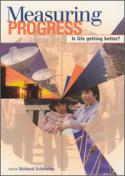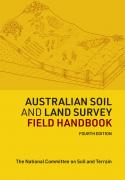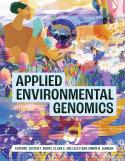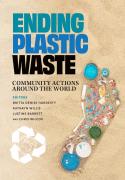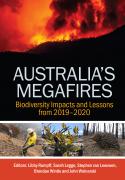This book is the most wide-ranging exploration of national progress yet undertaken, spanning social, economic and environmental perspectives. It brings together some of Australia’s leading researchers to consider indicators of national performance, what they tell us about the quality and sustainability of life in Australia, and how these measures can be improved. It also includes commentaries by senior bureaucrats, academics and community representatives.
At one level, the debate is about the adequacy of Gross Domestic Product, as the dominant indicator of a nation’s performance, relative to both the past and other nations. However, the debate also reaches far beyond this question to challenge conventional thinking about progress and the relationships between economic activity, quality of life, health and well-being, and ecological sustainability.
- Page 3Abstract
This paper explores the concept of progress, of how we make life better. It looks especially at the relationships between economic growth, quality of life and ecological sustainability.
The paper draws on three streams of research and analysis: (1) public perceptions of life satisfaction, quality of life and the future; (2) the nature of progress and the development of new measures of progress; and (3) the ‘story’ of Australia as revealed by six indicators that describe aspects of economic, social and environmental change over the past 100–150 years.
In Australia and other developed nations, we have defined progress in mainly material terms and measured it in terms of a rising per capita GDP (Gross Domestic Product). The equation of more with better — of standard of living with quality of life — is coming under critical scrutiny in the research literature, but remains largely unquestioned in mainstream public and political debate. At best, the issue is dealt with in a fragmented fashion. The fundamental assumptions about the relationships between economic growth, quality of life and ecological sustainability are rarely highlighted or explored.
The rationale for economic growth seems flawed in several important respects: (1) it reflects too narrow a view of human well-being, and fails to explain why, after 50 years of rapid growth, so many people today appear to believe life is getting worse; (2) it overestimates the extent to which past improvements in material well-being are attributable to growth; and (3) it underestimates the gulf between the magnitude of the environmental challenges we face and the scale of our responses to them.
There is evidence that the developed world has passed a threshold, a point beyond which economic growth (as currently defined and derived) ceases to improve quality of life. New indicators that adjust GDP for social and environmental factors suggest the trends in GDP and national well-being, once moving together, are now diverging. Sustainable development offers an alternative to conventional growth as a path of progress, but exactly what it means and how it can be achieved remain unclear.
The crux of the debate about progress is the direction of change. Will we improve the quality and sustainability of life by continuing on our present path of progress — increasing average wealth to give the average consumer greater choice? Or do we need to find a new path that leads in a different direction, towards new personal and social goals? Both expert analysis and public opinion suggest the need to canvass more openly the possibility and feasibility of new directions.
- Page 35Abstract
This paper examines some key problems — political, social and methodological — in systems to measure national progress. They include:
• the democratic legitimacy of such systems;
• the meaning and adequacy of the concept of ‘progress’ adopted;
• the standards against which progress is claimed; and
• the neglect of important measures of social, civic and environmental well-being traditionally considered vague or controversial.
The paper traces the historic development of ideas about progress, their use to further particular political interests and the way state-based statistical systems often reflect these influences. It argues that the present time is an especially appropriate time for Australia to develop a new system of indicators or ‘social audit’ reflecting broader answers to the question: what kind of society should Australia be? Such a system would integrate economic, social and environmental notions of ‘progress’ and its development could be linked to other social change processes such as constitutional reform and the renewal of citizenship.
Finally, it examines briefly the National Citizenship Project, a collaborative project between universities and the community, aimed to develop a new national system of indicators and benchmarks of citizenship and well-being.
- Page 53Abstract
This paper provides a general overview of the conceptual, political and practical issues involved in developing new indicators of national well-being, summarises recent US governmental and non-governmental attempts to broaden measures of national progress, and discusses how the successes and failures of the US indicator experience can help guide Australia’s initiatives in this arena. Topics covered include: (1) why indicators matter and the growing interest in incorporating social and environmental capital in national accounts; (2) the history and shortcomings of the GDP, including how critiques of the GDP are beginning to transcend the conventional political spectrum; (3) the central options in developing new measures of national well-being (e.g. aggregated versus disaggregated indicators, monetised versus non-monetized indicators); (4) a discussion of the Genuine Progress Indicator, its strengths and weaknesses as a measure of well-being, and the political strategy used in promoting it in the US; (5) a review of the recent successes and failures of US governmental efforts to broaden measures of national well-being, including a discussion of current threats to the nation’s data-gathering apparatus; (6) an overview of the growing community indicator movement in the US; and (7) how better indicators can lead to better policies, and the type of policies that would follow from more accurate valuation of social and natural capital.
- Page 69Abstract
Economic growth, measured by growth of GDP, is the principal objective of economic policy. Yet most economists would agree that it is a poor indicator of changes in national well-being. One of the shortcomings of GDP as a measure of well-being is that it does not reflect the economic or ecological sustainability of activity. Growth can be maintained for a time while stocks of physical, natural and social capital are run down. The Genuine Progress Indicator (GPI) has been constructed for several countries as an attempt to create a better numerical measure of changes in sustainable social well-being. It adjusts personal consumption for, among other things, changes in income distribution, the value of household work, the costs of unemployment and various social and environmental costs. The results of the Australian index are presented.
- Page 93Abstract
Gross Domestic Product (GDP) has never been intended by economists to measure the welfare of a society. Rather it is a useful measure of fluctuations and trends in certain types of economic activity — most, but far from all, of which have the potential to enhance welfare. One bonus of the GDP measure is its apparently consistent quantification over time and across countries. The uncritical use of such measures for inter-temporal or inter-country comparisons can, however, be very misleading. The paper discusses application of this measure to assess Australia’s economic progress over the last half decade.
Although a range of alternative measures of economic activity have been proposed, it may be preferable to amend only gradually our definition of GDP whilst explicitly recognising many other aspects of human and social welfare in the wider context of social indicators. Adding together a variety of indicators with arbitrary weighting and scaling can lead to endless disagreement over the implicit valuation of the individual components. We briefly introduce methods of applying economic principles to this problem. The principle of ‘opportunity cost’ can be applied to social outcomes which in turn allows the principle of ‘revealed preference’ to be applied as a measure of progress or regress. These principles can be applied to take account of differences across countries in life expectancy, producing an economically meaningful alternative to the Human Development Index. This measure reflects the actual costs of choices faced by individuals and policy-makers.
- Page 109Abstract
Few, if any, economists worldwide would disagree with the notion that Gross Domestic Product (GDP) is not sufficient in itself for analysing national progress. This widespread belief has led to a move towards developing alternative indicators. These are often a composite of a number of different indicators. Indeed, several composite indicators have been developed over time, with the Genuine Progress Indicator having received a lot of prominence recently.
Whilst such measures may be effective in capturing headlines, they are difficult to interpret accurately. This paper argues that a preferred approach is to develop a set of indicators, linked by an underpinning statistical framework. Several possible frameworks exist, including those used in some other countries. This paper examines some of these frameworks and alternative measures and concludes that the 1993 System of National Accounts (SNA93), with its satellite accounts and social-accounting matrices, provides the most suitable framework.
Summary indicators can be derived from this framework. As well as providing the underlying logic for the set of selected indicators, the framework can also supply the more detailed data to support further analysis.
- Page 125Abstract
Traditional mortality indicators such as life expectancy and infant-mortality rates have been used for over 100 years to monitor the health of populations. However, they are no longer adequate for low-mortality populations of developed countries, where the non-fatal consequences of disease and injury for health and well-being are of similar importance to premature or preventable mortality. Future progress in population health must increasingly relate to improving quality of life rather than quantity of life. Two major types of population-health indicator have been developed that combine mortality and quality-of-life information into a single indicator: the health expectancy and the disability-adjusted life year. We review these and use them to address the question of whether Australians are becoming healthier as they live longer.
The world health community has repeatedly endorsed a definition of health which goes beyond the absence of illness and disease and incorporates the concepts of physical, mental, social and spiritual well-being. While there are well-validated indicators of disease, the measurement of the impact of disease and of physical, mental, social and spiritual well-being as positive constructs has been left almost untouched. Furthermore, as the population-environment issues bite, the sustainability of current levels of population health have not adequately been measured or predicted.
It has become urgent to inject indicators of well-being and sustainability into the way health/positive-care systems are organised and structured. We briefly review some of the available indicators and measurement instruments for positive well-being and identify priorities for further work.
- Page 157Abstract
Present measures of well-being tend to be economic, or what might be termed socio-economic. With respect to social capital, few of the existing measures of attitude and process can be used to assess how people feel and therefore predict how they may act. The ‘objective’ measures we have are very limited as they assume that people feel good when financial journalists do. The correlation between good economic data and social well-being is assumed to exist, to be significant and adequate for assessing where we are and may go. We measure the easily measurable and these figures may be grossly misleading. We need to examine what types of measures would round out one dimensional static snapshots. Levels of what may be called civic and social trust may be better predictors than school retention rates or household disposable income of how people feel and therefore the health of the social systems.
- Page 169Abstract
In seeking measures of national progress, we present a brief overview of what is involved in measuring what one might call ‘subjective well-being’, its components, and the factors it relates to. We then present a very straightforward measure of national well-being, ‘happy life expectancy’, which is the average level of subjective well-being of a nation’s citizens, multiplied by the number of years they can expect to live. This measure is shown to be substantially correlated with a range of other important social and economic indicators.
- Page 183Abstract
How do Middle Australians understand economic reform? What is the evidence for and against the official ‘economic rationalist’ view that ordinary people will barely notice what has happened to incomes over time? Preliminary data from the Middle Australia Project suggest that shifts in income do have some impact on subjective well-being and that economic insecurities about incomes and job prospects are strong. We find that Middle Australians have a remarkably clear view of what has happened to household incomes over time and that they know who have been the winners and losers from economic reform. Our respondents seem aware that Middle Australia is under pressure, that quality of life is negatively affected by economic reform and that we are experiencing some ‘hollowing out’ of the broad middle class. These findings are commensurate with further data showing a weakening confidence in our institutions and an unwillingness to let government off the hook. Middle Australians blame government most for the social impacts of economic restructuring and they reject the view that governments can do little to moderate economic reform.
- Page 201Abstract
Paid employment is a major part of most people’s lives. It is by far the largest source of income for most people (about two thirds of national income is in the form of wages and salaries). It largely determines social status and is a major means by which people see themselves as having a productive and contributing relationship with life. Men have typically spent about a third of their waking hours for two thirds of their lifetimes in paid employment. The proportion of a lifetime spent in employment is falling for men and rising for women. Thus the time spent at work consumes a substantial part of a typical person’s life, and the quality of the work environment — physical and social — impacts directly and substantially on the quality of life. The labour market in Australia (and elsewhere) is experiencing considerable change. Inequality in the distribution of hours of work and of earnings is rising. So too is long-term unemployment and the proportion of the workforce which is employed part time and casually. Union membership is falling and the role of industrial tribunals is diminishing, leaving more of the employment relation to the determined at the workplace. Is this progress? The paper will explore ways whereby we can answer this question.
- Page 223Abstract
Poverty research in Australia has become bogged down in an esoteric debate over the poverty line and the poverty statistics. By focusing almost exclusively on the merits and limitations of the Henderson poverty line, this debate has become detached from the main issues relating to the causes and consequences of poverty in Australia in the 1990s. As a consequence, its credibility has been undermined and its impact on policy marginal, at best. There is a need to re-shape this debate so that it leads more naturally into consideration of the broader issues surrounding the meaning of poverty. At the same time, the development of income adequacy benchmarks is an important task if goals are to be established to guide the formulation of policies on incomes in the social security and other fields. This paper will illustrate how the current poverty measurement debate can begin to be reformulated by combining data on household incomes and expenditures in order to provide new insights on what poverty means in terms of restricting the choices of the poor. This will be followed by a brief discussion of the potential role of new methods for establishing income adequacy benchmarks (such as budget standards), drawing on research currently in progress at the Social Policy Research Centre.
- Page 239Abstract
Changes in income levels and in income inequality are widely used indicators of whether or not life in Australia is improving. There are numerous studies in Australia of recent trends in income inequality (Saunders 1993; Nevile 1995; Harding 1996). Such studies sometimes reach divergent conclusions about trends in income inequality, due to different methodologies and data. This paper examines some of the key decisions that have to be made before measuring income inequality. These decisions may appear technical and obscure, but they have a major impact upon the results. It also presents recent estimates of trends in income inequality in Australia, during the period from 1982 to 1993–1994.
- Page 255Abstract
This paper extends the metric of analysis for measuring poverty and inequality beyond disposable income to include the value of non-cash benefits, to make allowance for the flow of services from the principal household asset, the housing stock, and to compare these income-based measures with measures based on expenditure. The results are derived from analysis of the unit records of the 1993–94 Household Expenditure Survey (ABS 1996). Conventional measures of the income distribution, quintile shares and summary measures such as the Gini index and the entropy index are calculated. A simplified set of equivalence scales roughly based on the Henderson scales is used to measure poverty rates and poverty gaps and a new index is employed which incorporates a weighting for the extent of deprivation. Measures of poverty for income and for expenditures are obtained by maintaining the threshold level of a reference family at a constant share of mean household income. The results of the comparisons are used to discuss the meaning of the measures of poverty and inequality and to highlight both strengths and weaknesses of the idea of their use as social indicators.
- Page 269Abstract
Measuring national progress towards ecologically sustainable development requires facing two ways: inward to the particular goals for each locality, and outward to global conventions and agreements. National accountability for the global and local effects of Australian environmental policies needs to include recognition of the twin effects of the globalisation of finance, industry and information and the responding strengthening of civil society. Another issue is the difficulty of relating the monitoring of the bio-physical and the socio-economic environments, when these are examined through two different systems of knowledge. This paper reviews the capacity of Australian monitoring processes to meet these challenges. Measuring national progress will require indicators capable of assessing progress towards meeting the shared community vision of each individual locality; establishing strategic alliances between government agencies and the civil society; reducing the ecological footprint of both urban and rural areas; interpreting the cumulative social, economic and environmental effects of change; and establishing coherent decision-making between local, regional and national scales.
- Page 287Abstract
The National Strategy for Ecologically Sustainable Development identified regular reporting on the state of the environment as a vital step toward the achievement of sustainable development. The first independent national State of the Environment report, Australia: State of the Environment 1996, was completed and released in 1996. It established the principles for regular reporting, to which successive Commonwealth governments have given support. Work is proceeding on development of a set of environmental indicators to monitor progress between full-scale reports. The development of an integrated system is hampered by the unavailability of much important data and variations in approach between different governments. The State of the Environment report identified structural problems as a significant impediment to environmental management.
- Page 299Abstract
Following publication of Australia: State of the Environment 1996, Environment Australia initiated a program to develop environmental indicators for future state of the environment reporting. These indicators are being designed to monitor and report on major trends in Australia’s environment and to contribute towards measuring progress towards ecological sustainability. In the first phase, expert indicator coordinators have been engaged to produce: a set of scientifically credible indicators for use in the next report, expected in 2001; advice on appropriate monitoring strategies and availability of data; and proposals for future research. Related projects, carried out in collaboration with the Australian Local Government Association and the states, are identifying indicators which can be used in state, local and community reporting and integrated into a consistent national reporting approach.


